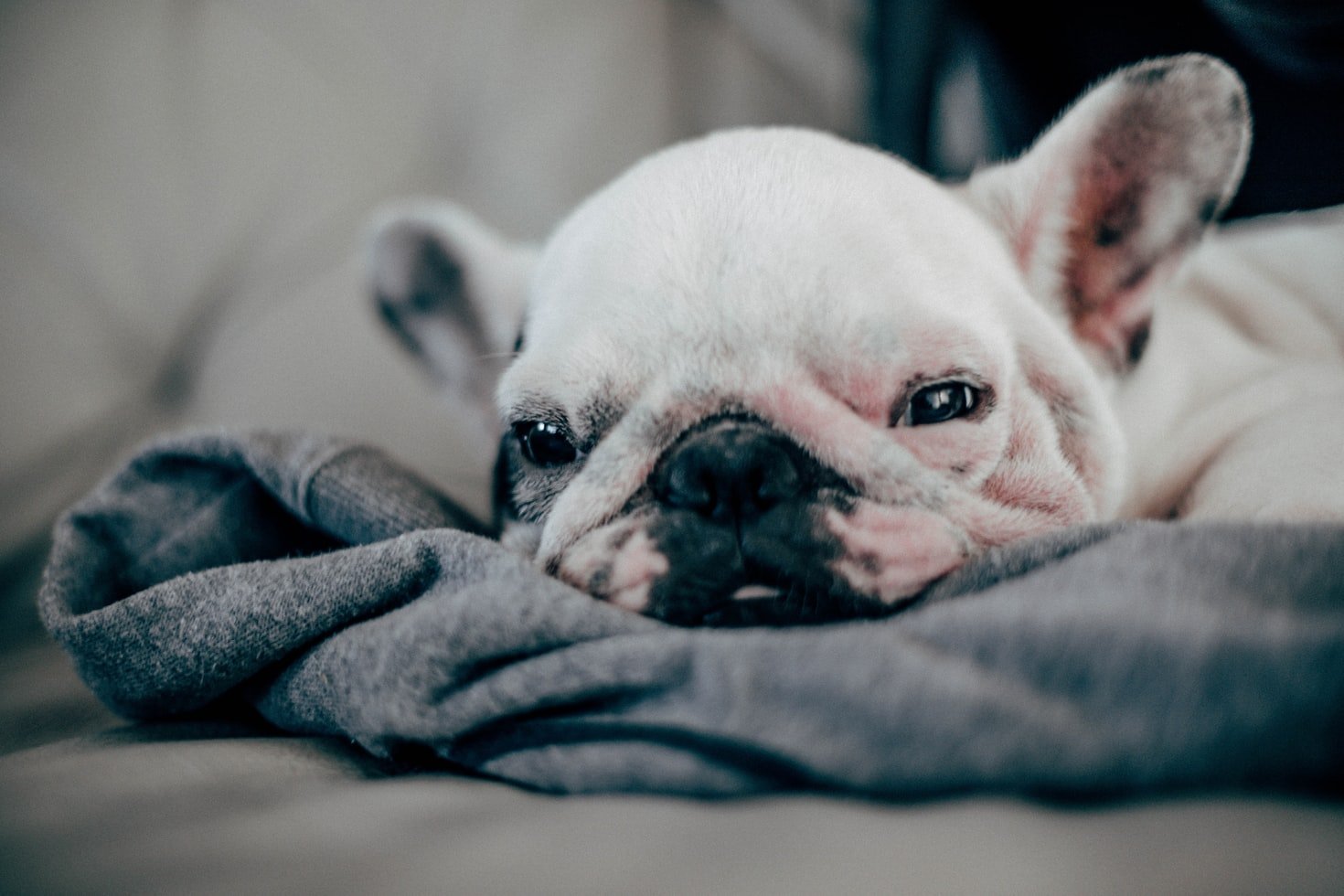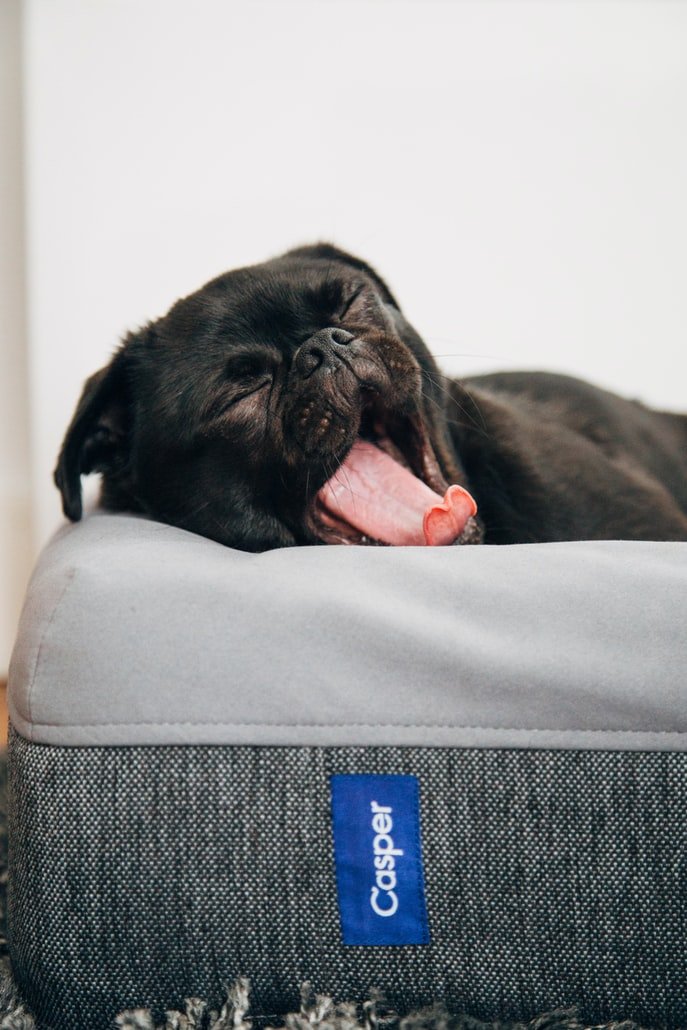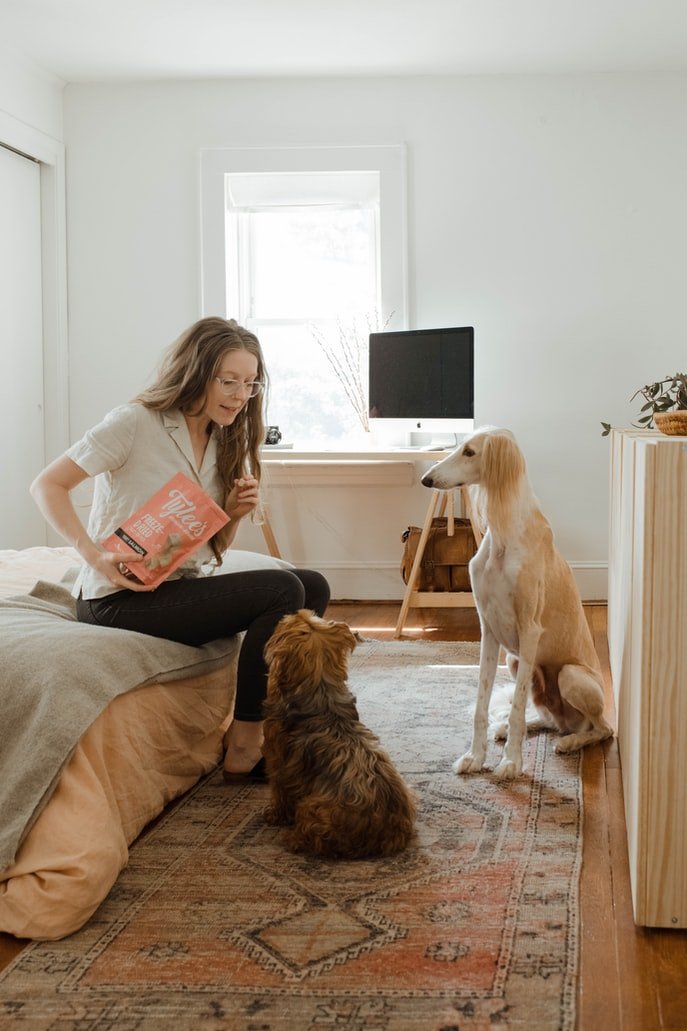Dog or puppy separation anxiety is more common than you’d think.
We’ve put together a handy guide on how to help with anxious pets cope being away from their owners.
Signs of separation Anxiety in Dogs
- Crying or whining
- Barking
- Tucking their tail between their legs
- Ears pinned back
- Ripping or destroying things
- Pacing
 Although the above are signs of anxiety in dogs, many of them can also be signs that your dog is bored too.
Although the above are signs of anxiety in dogs, many of them can also be signs that your dog is bored too.
If possible, set up a camera when you are away and watch the footage back to identify triggers for your dog’s behaviour. Is it something external that’s upsetting them?
For example, loud traffic noises outside disturbing them.
Causes of puppy or dog separation anxiety
-
Overwhelming sensations or surroundings
For a puppy, the world can be a scary place. They may feel that they need you to support them as they explore the world. Building your puppy’s confidence can help encourage independence.
-
Changes in schedule
If there has been a change in schedule, for example their owners returning to the workplace after working from home during COVID, then this can be scary to your pets. They need to learn to be left alone again.
-
Change in where they live
Whether it’s a new guardian or a new residence, anxiety in dogs is common with these changes. They will need to be shown that their environment is safe and that their new owner will return after leaving the house.
How to help with your dog’s separation anxiety
- Puppy Separation Training to help increase the time your dog can be left alone.
- Having a family or friend pop in to break up the time left alone.
- Signing up for professional dog walking
- Think about using plugin diffusers or collars which release natural calming pheromones.
- Make sure they have somewhere safe and warm to retreat to when they get overwhelmed.
- Consider leaving old items with your scent on at home.
- Make sure your dog has access to stimulating or distracting activities like long lasting chews and food puzzles.
- Staying calm and now punishing them for any destructive behaviour caused by their anxiety.
- Leaving the radio on with music can help your pet feel like they aren’t alone.
- Tire your dog out before leaving them if possible. You could take them for a long walk or play with them before you need to leave.
Puppy Separation Anxiety Training
- Identify how long your dog can be left alone before they become anxious. The easiest way to do this is by installing a baby gate between you and them and monitoring.
- Once you’ve identified the time your dog is happy to be left alone you can practise leaving them for that time. Remember to leave lots of stimulating activities and toys to keep them calm and busy.
- When your pet is happy to be left alone for that period of time, start increasing the time slowly. This can be done minute by minute if needed until you reach the needed time.
How to help increase your dog’s confidence
The cause for your puppy’s separation anxiety could actually be related to their confidence. Boosting their self confidence can be a great way to encourage their independence.
Here are some ways tips to help boost your pet’s confidence:
1) Reward your dog for any independent behaviour. For example, if your dog settles away from you, offer some calm praise.
2) Offer positive rewards during your puppy’s training.
3) Look at providing him with stimulating activities. Food puzzles work really well here as they reward your dog for engaging with the puzzle.
The most important thing when dealing with dogs with separation anxiety is to be calm and patient.
If the anxious dog symptoms persists then it might be worth speaking with a vet about medication for anxious dogs.
